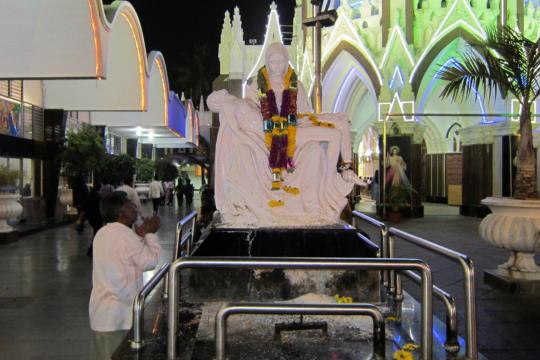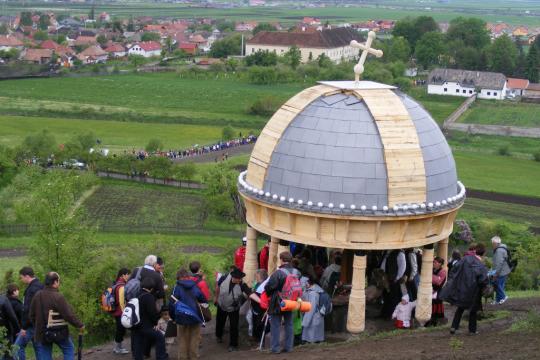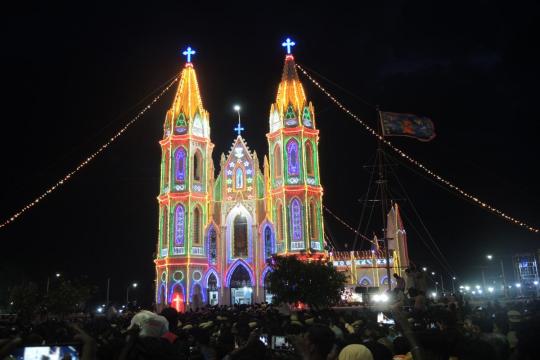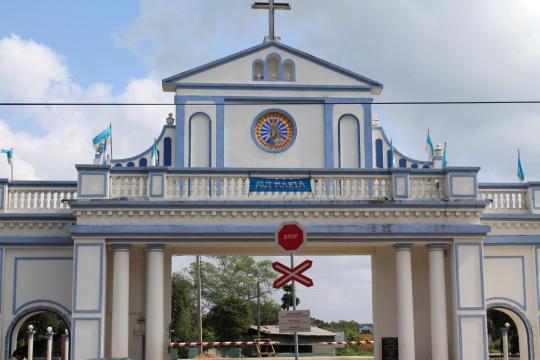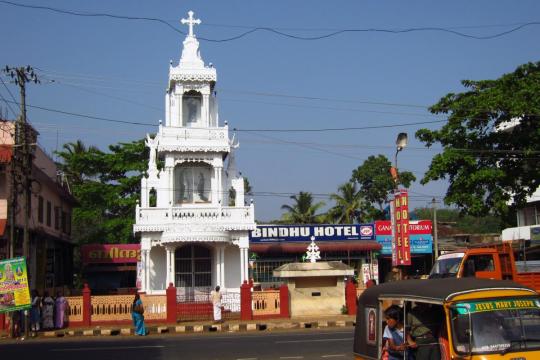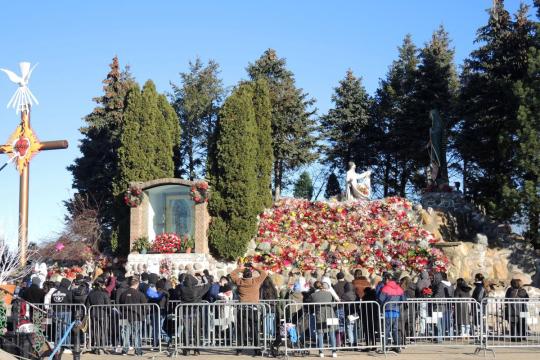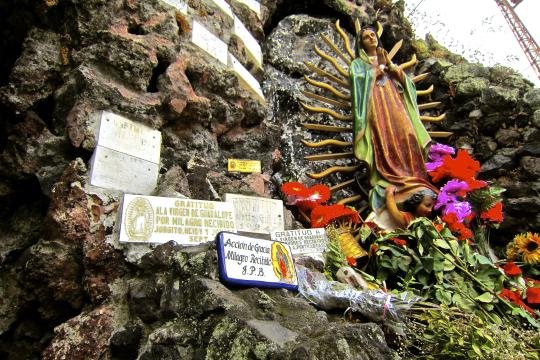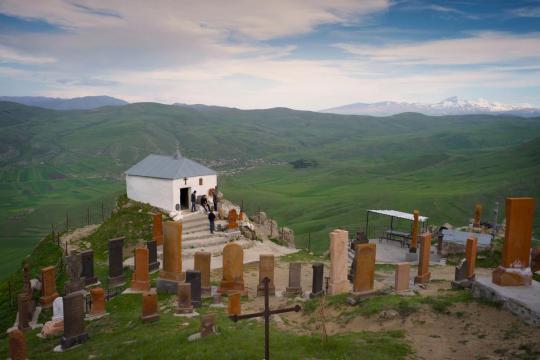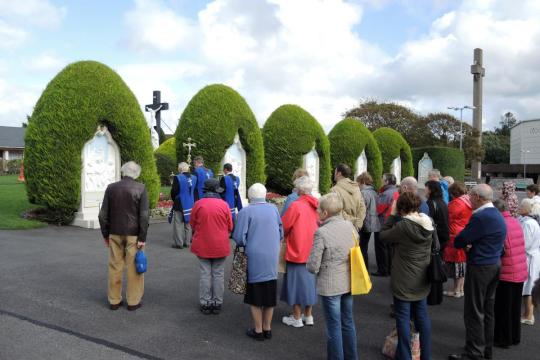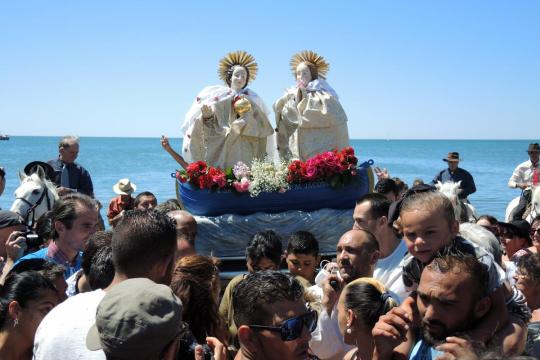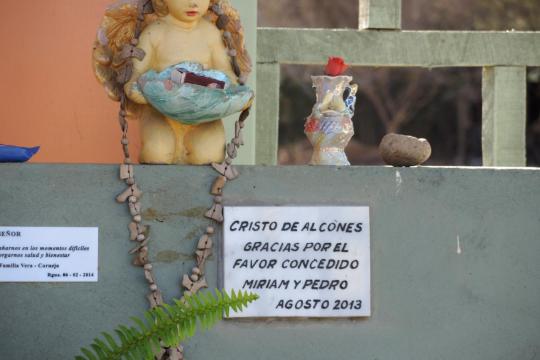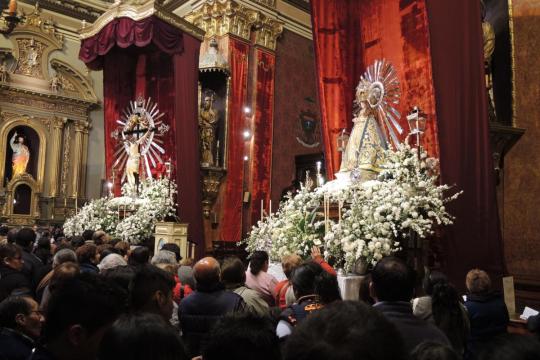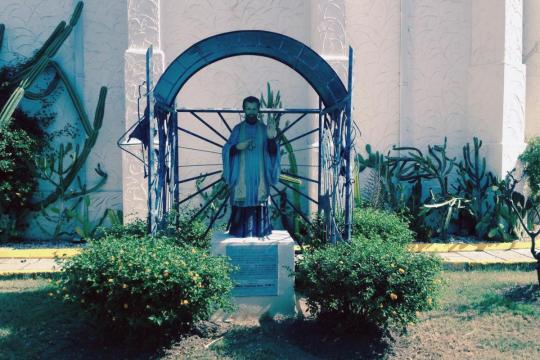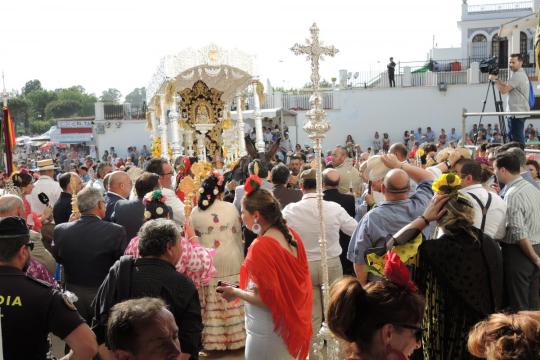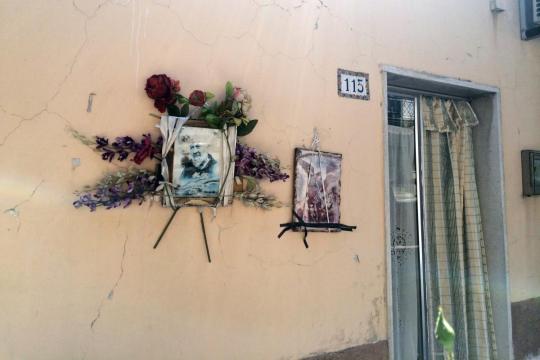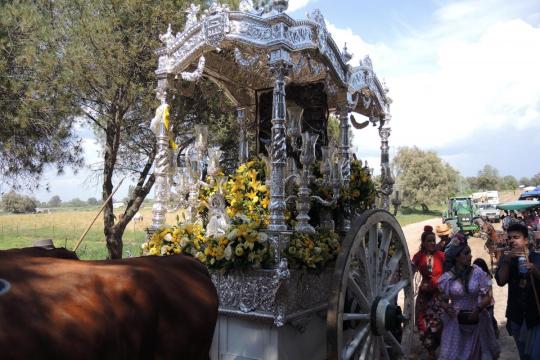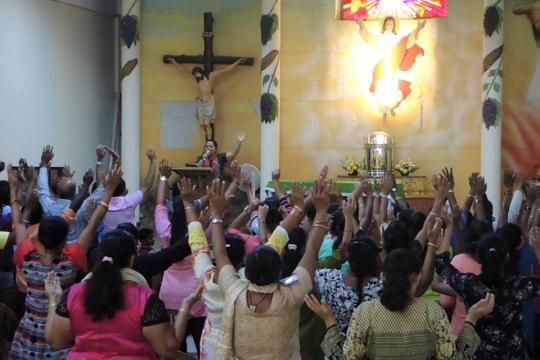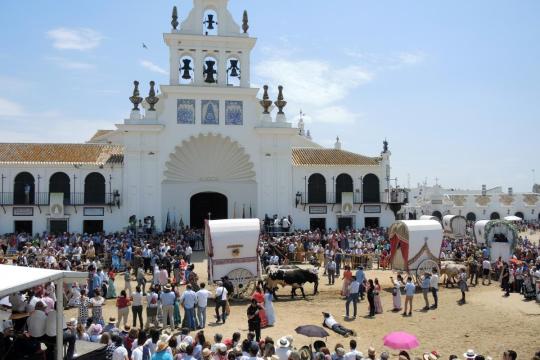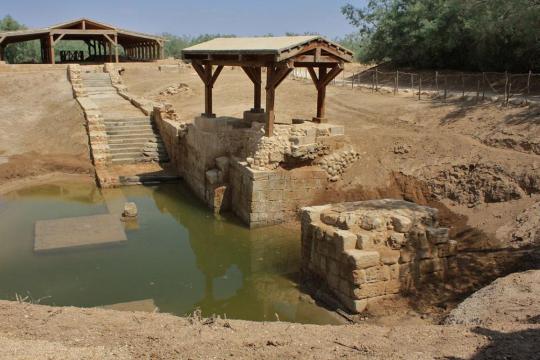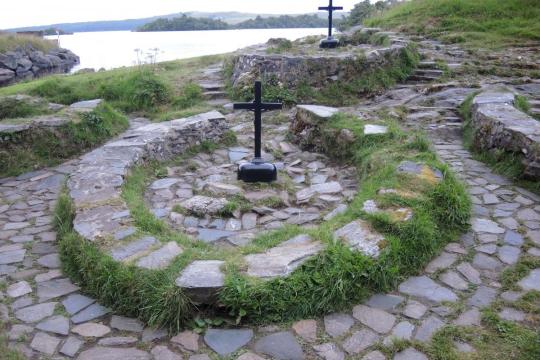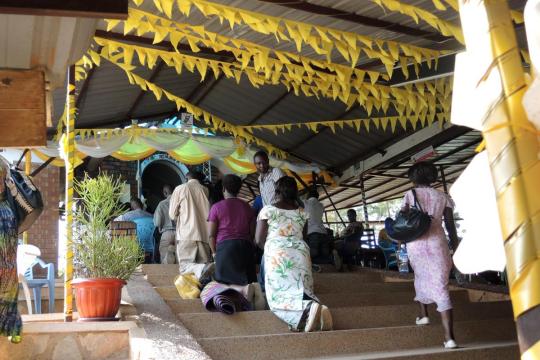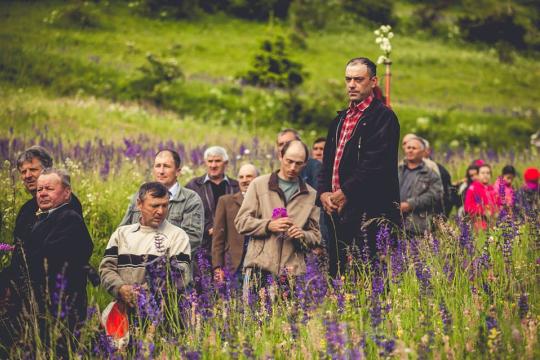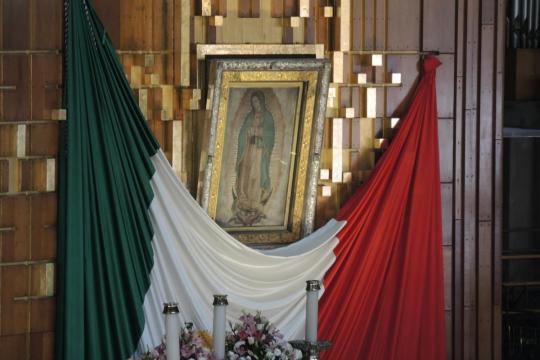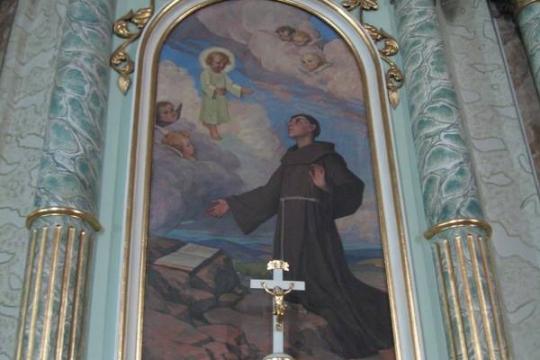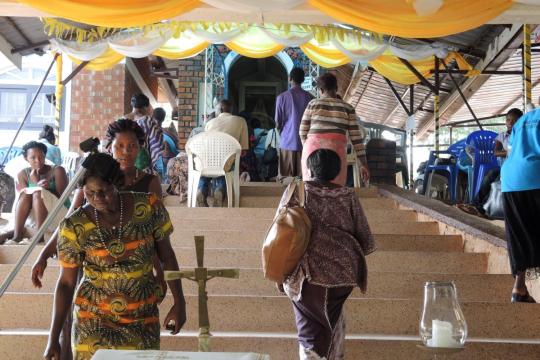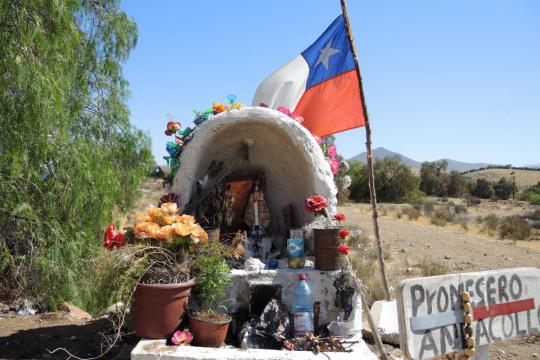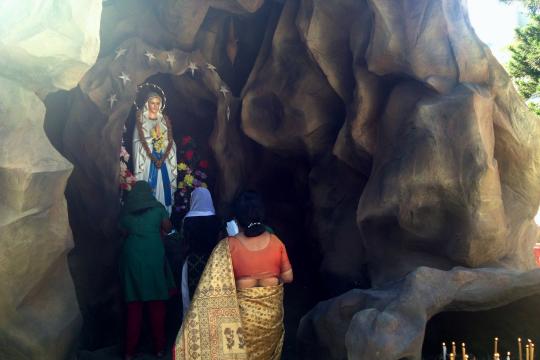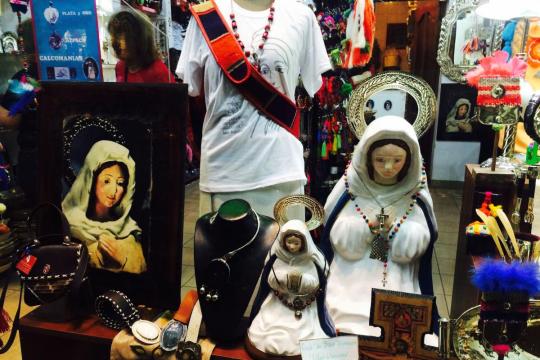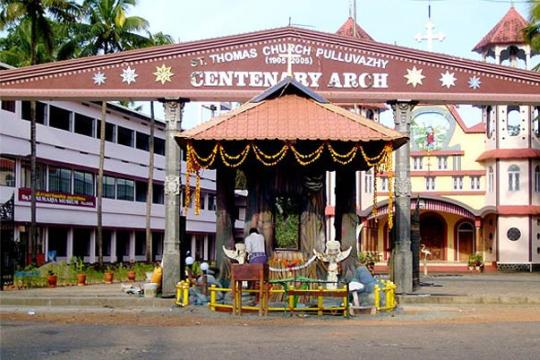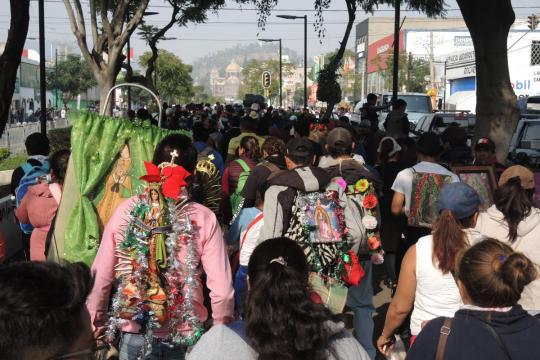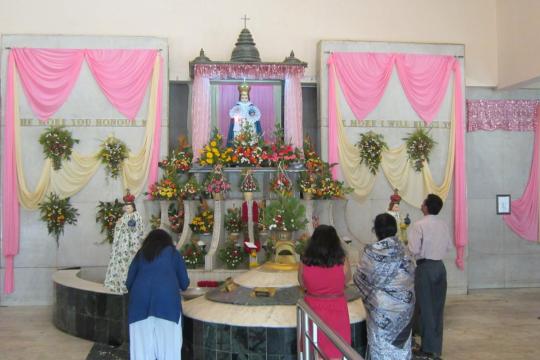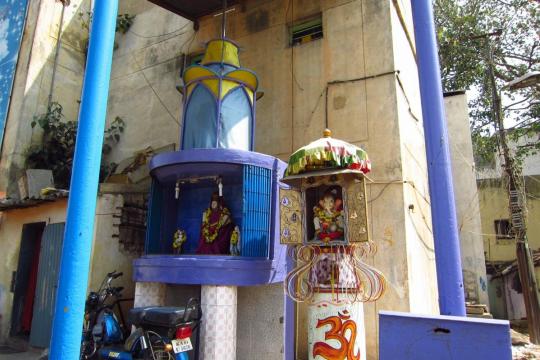The word “shrine” has multiple meanings across religions and even within Catholic usage. For our purposes, it refers to active sites dedicated in honor of a saint, or, less frequently, an event in Jesus’ life. These sites are occasionally located inside or just outside a parish church, but more often are distinct from the parish, whether they are official or unofficial sites. Examples include include major Marian shrines that claim to be sites of apparitions; devotional shrines that crop up at side altars or outside parish churches, allowing for ongoing devotion to Mary or another saint; statues and grottoes in neighborhoods or at crossroads; and sites where a saint or a holy person is buried.
In early Christianity, shrines began at the sites of Christian martyrs’ burial. Subsequently those bodies were brought into the churches, but shrines have often derived their power from the fact that a sacred intervention occurred in a specific place, or the remains of a sacred person inhabited a place. The most powerful shrines are always places where a saint lived, died or was buried; where his or her presence is somehow specially felt; or where a supernatural visitation took place. In the early Church, Peter Brown notes, “Hic locus est. ‘Here is the place,’ or simply, hic, is a refrain that runs through the inscriptions on the early martyrs’ shrines of North Africa.”1 The modern animitas of Chile, popular shrines to ordinary people who suffered a violent death, serve a similar function, located as they are at the place of the death.
Catholic shrines are frequently turned to for healing or for prayers for a specific cause. At many of them illness – both physical and mental – is on display and is part of the power of the shrine. In Uganda, at the Mt. Sion Bukalongo shrine, possession and/or mental health problems were very much on display, perhaps even part of the power of the site.2 At Lourdes, physical debilities are there on display, for the same reason. At other sites, the nature of the debilities that prayer is sought for might be written (even as graffiti on the walls), or best kept private, interior and discreet, as local cultural mores would prefer it.
Still, not all shrines need to be the place where a visitation or death originally happened, or places of miraculous healing. Occasionally shrines make no claim to a visitation or inhabitation (such as the huge shrine of Our Lady of Lebanon, pictured) but still hold a powerful capacity to connect visitors to the power of the divine or to a divine intermediary. Indeed, imitations of original shrines will often serve at least as good a purpose. They are places where visitors feel a heightened sense of being and connection.3 Neighborhood shrines, such as those common in India, Lebanon or Italy, are ways of claiming and bringing the presence of saints into a neighborhood, making them accessible, and even marking a house, neighborhood, or whole country as Catholic or Christian.
Catholic shrines are often marked by flowers, candles, notes, or money left by devotees. Ex voto offerings, including metallic pieces that might signal the body part for which one needs healing; a motorcycle helmet, a wedding dress or a baby bib are left at shrines in many countries as signs of need or thanks, often as a witness to the power of the saint celebrated at the shrine. Given Catholics & Cultures’ focus on lived Catholicism, this website is particularly interested in shrines that give evidence of lived devotion, rather than in shrines that may serve primarily as historical markers of devotions that are no longer influential.4 Such shrines help us begin to understand where, when, and how shrines become important to ordinary believers.
Pilgrimage
Pilgrimage, travel to a holy place or for a holy purpose, has a long history in the Church, though it is never identified as a religious practice or priority in the scriptures. Pilgrimage became part of the Catholic tradition in the fourth century, when Christians wanted to travel to the places that were part of Jesus’ life, or to the graves of the martyrs and Saints Peter and Paul.5 Pilgrimage is not universally practiced by Catholic Christians, but it is fair to say that across the tradition it has an important place for many Catholics. A few pilgrimage trails, most notably Europe’s medieval Camino de Santiago, have been reconstituted in recent decades and become popular with Christians and non-Christians alike.
Both the journey and the destination are important in understanding pilgrimage. What is said to have been be long true of Catholics in Celtic cultures applies to many, but certainly not all cultures: "The actual act of walking was a sanctifying activity; the act of walking in a group, processing, was a liturgical act of the first order."6 Though the relative value of journey and destination may differ for different pilgrims, the process of having to leave one’s home to travel to another—sacred—place is crucial.
Pilgrimage is both a social and an interior process, and occurs both in individual or small group contexts, such as hiking the Camino de Santiago, and in organized group contexts, as with the tour groups that travel to Rome, Lourdes, Velankanni and Fatima. As was true in the Middle Ages, many people who travel on pilgrimages carry symbols like a scallop shell or a special scarf that mark them as pilgrims. While often associated with penance, many of today’s pilgrimages can surely be well organized and enjoyable enough to seem more like religious vacations than penance, or certainly like a mix of the two.
Shrines may be marked off as sacred and “other,” and sites where the holy has entered the ordinary world. Still, and in part because of this, especially where they are pilgrimage sites, shrines are not places free from the bustle of commerce. Almost all major shrines are bustling with shops that sell devotional items, whether candles or flowers for the shrine, or religious and secular souvenirs to take home. Some pilgrims are disturbed at the commerce that “sullies” the holy, as was related at Knock in Ireland, or among some locals at the shrine of Padre Pio. But the continued presence of the shops is surely a signal that quite an adequate number of pilgrims disagree.
As Robert Orsi has noted about the major Marian pilgrimage shrines, “There is always an excess of expression and experience at Marian shrines–too many candles, too many statues and images, too many rosaries, too much desire and need, and too many souvenir stores hawking too many things.”7
Read more
Moved by Mary: The Power of Pilgrimage in the Modern World, ed. Anna-Karina Mermkens et. al., (Farnham, UK: Ashgate, 2009).
Reframing Pilgrimage: Cultures in Motion, ed. Simon Coleman and John Eade (London: Routledge, 2004).
Contesting the Sacred: the Anthropology of Christian Pilgrimage, ed. John Eade and Michael J. Sallnow (London: Routledge, 1991).
- 1 Peter Brown, The Cult of the Saints: Its Rise and Function in Latin Christianity (Chicago: University of Chicago Press, 1981) 81, 86. Churches have often been built on sites of preexisting shrines, or relics were moved into the churches in cities, to relocate forms of saintly devotion into a more Eucharist-centered framework. See Brown, The Cult of the Saints, 9, and Michael P. Carroll, Veiled Threats: The Logic of Popular Catholicism in Italy. Baltimore: Johns Hopkins, 1996.
- 2In early modern Christianity, such displays were evidently part of the power of many Christian shrines. See Peter Brown, The Cult of the Saints: Its Rise and Function in Latin Christianity (Chicago: University of Chicago Press, 1981), chap. 6.
- 3Robert Orsi, “Everyday Miracles: The Study of Lived Religion” in Lived Religion in America, ed. David D. Hall (Princeton: Princeton University Press, 1997).
- 4One can often see this in Rome, for example, where a simple photo of Pope St. John Paul II or of Padre Pio on the altar in front of a baroque shrine to another saint can becomes the primary focus of that altar today, as evidenced by the flowers and candles and notes left there, while the original cult behind the shrine shows no evidence of devotion.
- 5Robert Bartlett, Why Can the Dead Do Such Great Things?: Saints and Worshippers from the Martyrs to the Reformation (Princeton, Princeton University Press, 2013) 410-412.
- 6T. O'Loughlin, Celtic Theology: Humanity, World and God in Early Irish Writings (London: Continuum, 2000) 172, as cited in E. Frances King, Material Religion and Popular Culture (New York: Routledge, 2010) 93.
- 7Robert Orsi, “Abundant History: Marian Apparitions as Alternative Modernity” in Moved by Mary: The Power of Pilgrimage in the Modern World ed. Anna-Karina Mermkens et. al., (Farnham, UK: Ashgate, 2009).
Related Articles
- Religious Imageries at Polish Catholic Shrines
- Pilgrimage Palimpsests: Storytelling and Intersubjectivity Across Multiple Shrines, Sites, and Routes
- Longings, Letters and Prayers: Visitor's Books at Hungarian Marian Shrines
- Catholic Pilgrimage and the Politics and Pragmatics of Place-Making in Eastern Europe,
- The Secrets of Christian Others: Hungarian Catholic Intellectuals Debate Ecumenism at a Transylvanian Pilgrimage Site
- A Queer Chinese Pilgrimage: Encountering Catholic Life In Manila


